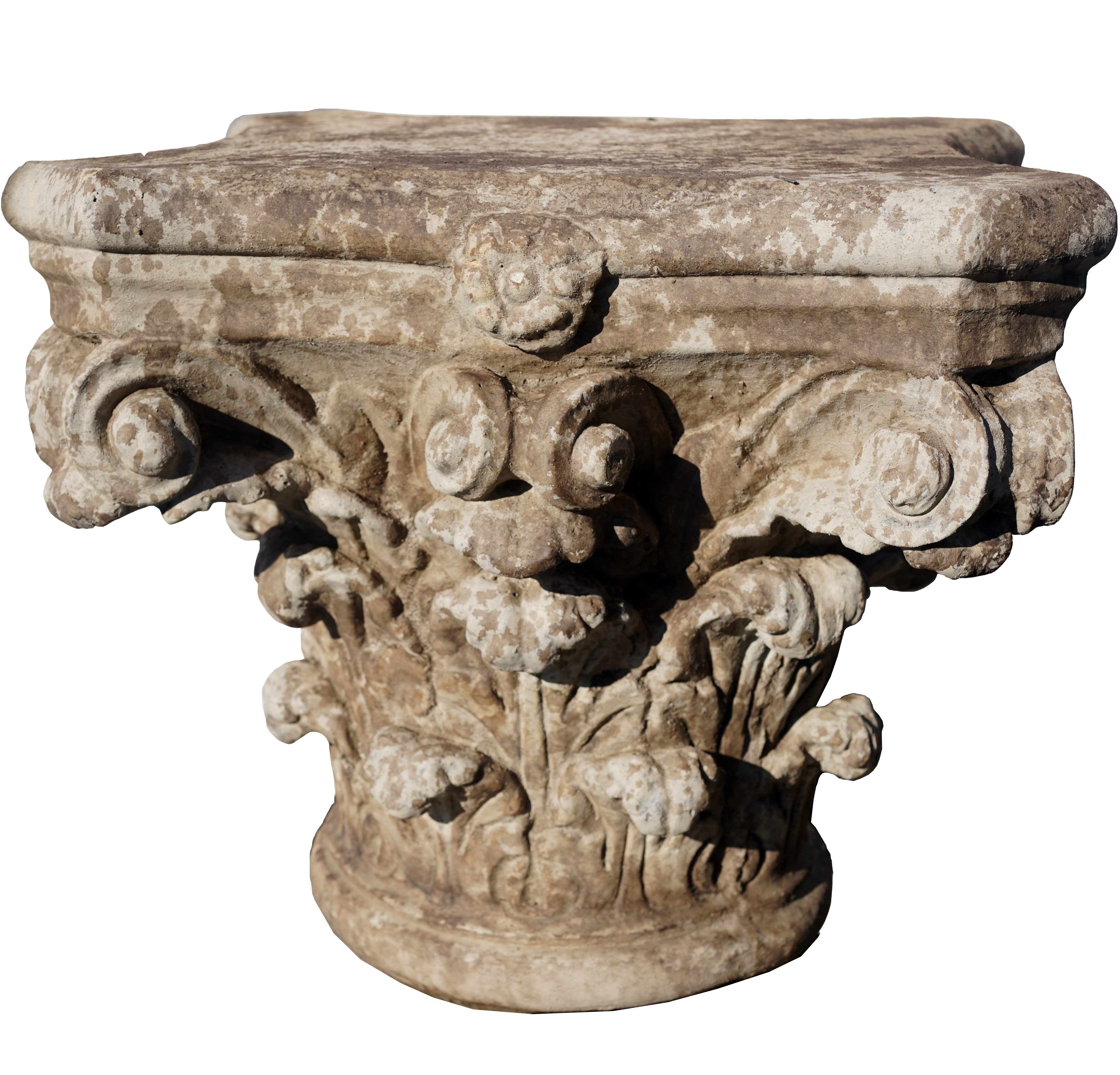






Code art.: 14266
Price: 350,00 €
Stock availability: 5
The Corinthian order (Latin Ordo Corinthius) is the last developed of the three principal classical orders of Ancient Greek architecture and Roman architecture. The other two are the Doric order which was the earliest, followed by the Ionic order. In Ancient Greek architecture, the Corinthian order follows the Ionic in almost all respects other than the capitals of the columns. When classical architecture was revived during the Renaissance, two more orders were added to the canon: the Tuscan order and the Composite order. The Corinthian, with its offshoot the Composite, is the most ornate of the orders. This architectural style is characterized by slender fluted columns and elaborate capitals decorated with acanthus leaves and scrolls. There are many variations.
The name Corinthian is derived from the ancient Greek city of Corinth, although the style had its own model in Roman practice, following precedents set by the Temple of Mars Ultor in the Forum of Augustus (c. 2 AD). It was employed in southern Gaul at the Maison Carrée, Nîmes and at the comparable Temple of Augustus and Livia at Vienne. Other prime examples noted by Mark Wilson Jones are the lower order of the Basilica Ulpia and the Arch of Trajan at Ancona (both of the reign of Trajan, 98–117 AD), the Column of Phocas (re-erected in Late Antiquity but 2nd century in origin), and the Temple of Bacchus at Baalbek (c. 150 AD).
| Height: | 18.11 |
| Diameter of the base: | 12.6 |
| Maximum width: | 20.08 |
| Weight: | 229.28 |
| Manufacturing: | Made in Italy |
| Material: | Malta cementizia |
| Note 01: | La patina può essere effettuata a richiesta più o meno scura |
| Historical references: | 0 |
| Historical period: | 0 |
| Note 02: | 0 |
| Note 03: | 0 |